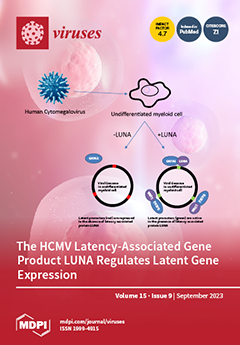Genetic polymorphisms in genes that encode natural ligands of CCR5 (the main human HIV coreceptor), such as
CCL5/RANTES, can alter the levels of secretion of these peptides. This article sought to review the relationship between single nucleotide polymorphisms (SNPs) of
CCL5/RANTES and
[...] Read more.
Genetic polymorphisms in genes that encode natural ligands of CCR5 (the main human HIV coreceptor), such as
CCL5/RANTES, can alter the levels of secretion of these peptides. This article sought to review the relationship between single nucleotide polymorphisms (SNPs) of
CCL5/RANTES and HIV-1 disease susceptibility. A meta-analysis was conducted through 17 articles found from January 1999 to December 2022 in the PUBMED, Science Direct, Medline, and SciELO databases. A total of three SNPs were identified and investigated under their dominant genotypic model and through a fixed-effects model. In terms of the SNP rs2107538 (G > A), in Africa and Asia, it has a protective role (OR = 0.56; 95% CI = 0.41–0.76;
p = 0.0002, and OR = 0.88; 95% CI = 0.76–1.02;
p = 0.08, respectively). In terms of the SNP rs2280788 (C > G), in Europe and America, it shows a higher risk role (OR = 1.92; 95% CI = 1.06–3.47;
p = 0.03, and OR = 0.94; 95% CI = 0.94–1.11;
p = 0.04, respectively), but in the population of Asia, with its mutant allele, it has a protective role (OR = 0.76; 95% CI = 0.63–0.93;
p = 0.007). In terms of the SNP rs2280789 (T > C), no significant associations were found. Both SNPs rs2107538 and rs2280788 have a positive transcriptional effect on the
RANTES/CCL5 gene, while SNP rs2280789 causes a decrease in gene expression levels. This study suggests that there is an association between the increased expression of
CCL5/RANTES and a lower risk of AIDS. Therefore, further studies are needed to arrive at a definitive conclusion, and these results may help establish scientific bases for effective HIV/AIDS control strategies.
Full article






